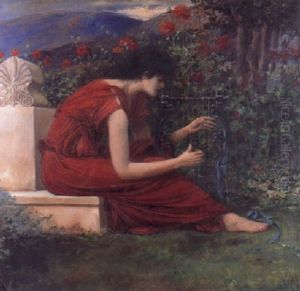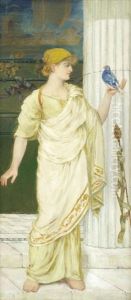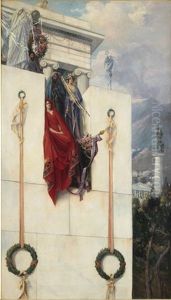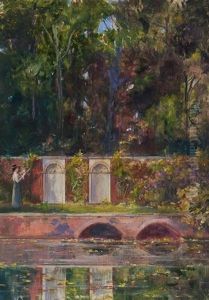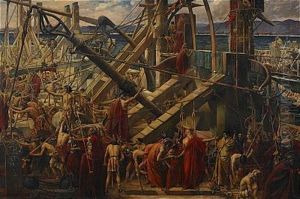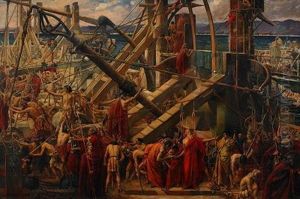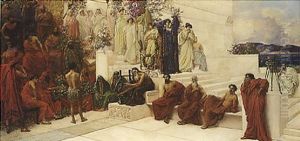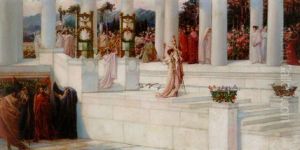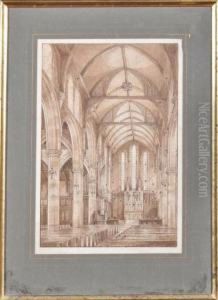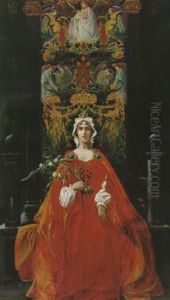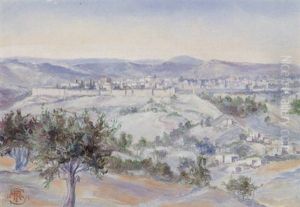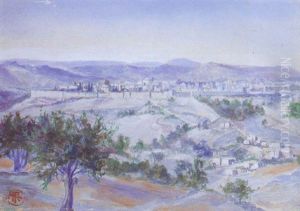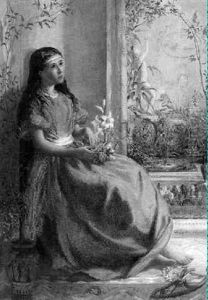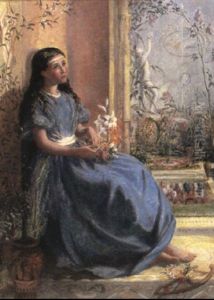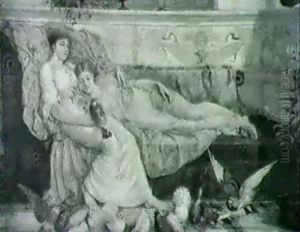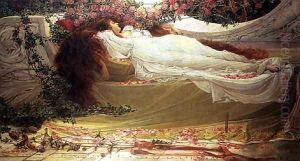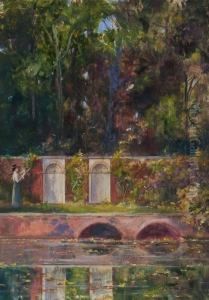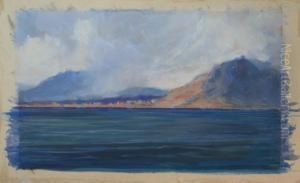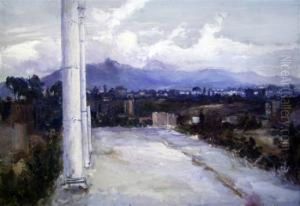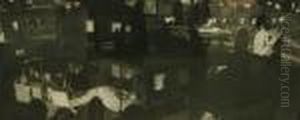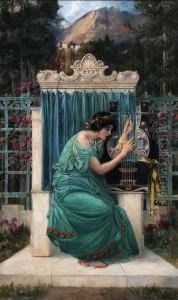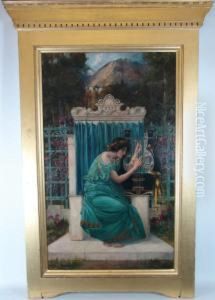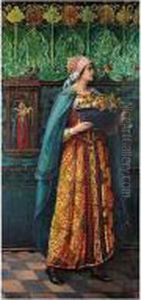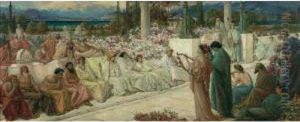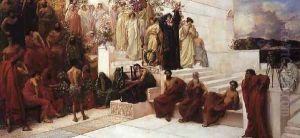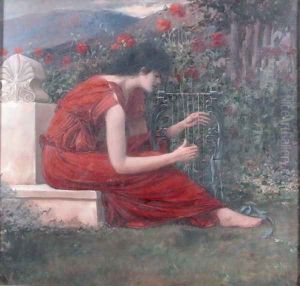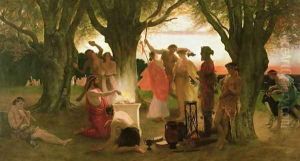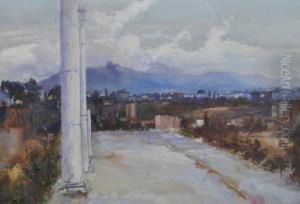Thomas Ralph Spence Paintings
Thomas Ralph Spence was an English stained glass artist and architect, born in 1845 in Newcastle upon Tyne. His work, though not as widely recognized as some of his contemporaries, played a significant role in the Arts and Crafts Movement in Britain. Spence's early life was characterized by a deep interest in art and architecture, which led him to pursue a career in these fields. He was particularly influenced by the Gothic Revival movement, a trend that sought to revive medieval Gothic architectural forms.
Spence's career took off in the late 19th century when he began to receive commissions for stained glass windows. His designs were notable for their intricate detail, vibrant colors, and the incorporation of both traditional and innovative motifs. Spence was not just a stained glass artist; he also made significant contributions to architectural design, particularly in the realm of church architecture. His works often featured a blend of Gothic and Arts and Crafts elements, demonstrating his versatility as an artist and architect.
Throughout his career, Spence was actively involved in the Arts and Crafts Movement, which emphasized the importance of craftsmanship and the beauty of handmade objects. This movement was a reaction against the industrialization of production and the perceived decline in design standards. Spence's commitment to the principles of the movement was evident in his meticulous attention to detail and his preference for traditional techniques.
Despite his talents and contributions to the field of art and architecture, Thomas Ralph Spence did not achieve the same level of fame as some of his peers. Nevertheless, his works have been appreciated by connoisseurs of stained glass and architecture, and they continue to be studied by scholars of the Arts and Crafts Movement.
Spence's legacy is that of a skilled artisan and architect who dedicated his life to the pursuit of beauty in art and architecture. His works, though not as prevalent as those of some of his more famous contemporaries, remain a testament to his skill and dedication. Thomas Ralph Spence passed away in 1918, leaving behind a body of work that continues to inspire admiration and respect.
